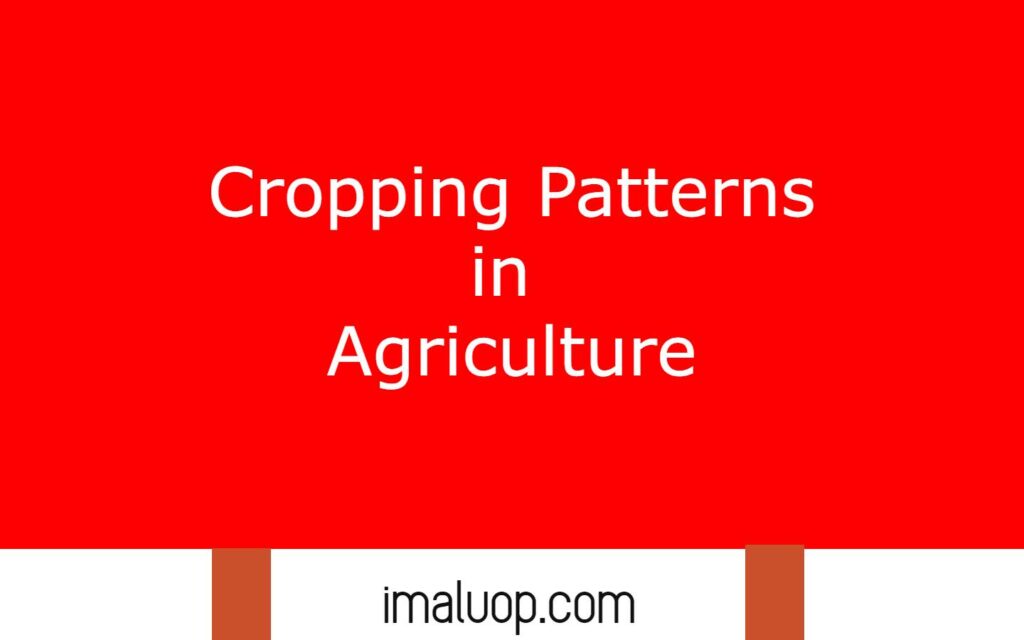We follow different types of cropping patterns in agriculture to get maximum yield and it is determined by climatic conditions and the suitable conditions for a specific type of crop. We distribute our agricultural land in different patterns for different crops according to the suitable conditions and we do it in such a manner so that we can utilise a land for maximum benefits.
Table of Contents
Different Types of Cropping Pattern:
Monocropping:
Monocropping is a cropping pattern in which we culture a same crop in a field multiple times which reduces the fertility of soil and cause reduction in yield to increase yield we have to apply chemical fertilizers to the field and excess use of chemical fertilizers change their soil physically and chemically and monocropping something responsible for spread of pest and diseases.
Mixed Cropping:
In mixed cropping we cultivate two or more crops together so that all the crops do not cause great economic loss because sometimes weather conditions may lead to crop failure but mixed cropping prevents the whole crop failure.
In mixed cropping we choose those crops who generally do not compete with each other for resources and do not interfere one crop on another crop like growing wheat and gram in a common field.
In mixed cropping one crop needs less amount of water than others and their maturation period is also different and their roots system collects water from different levels of soil, some have shallow root systems while some have deep root systems.
In mixed cropping we can minimise the spread of pests and diseases, we can minimise the economic loss due to failure of crops, we can get a variety of crops at the same time and in the same field.
Intercropping:
Like mixed cropping in intercropping we cultivate more than one crop in a field together at the same time but here we plant the different crops in a definite row to get maximum yield. Intercropping reduces the threat of crop failure, ensures optimum utilisation of resources and land, improves soil fertility, and prevents the spread of pests and diseases.
- Row Intercropping:
In row Intercropping we plant main crop and other crops in alternate rows to utilise the soil nutrients as much as possible and it helps to check the growth of weeds in the crop field.
- Strip Intercropping:
Sometimes we need to create separation between two crops we plant together in a field and it can be possible to plant the two crops in wide strips and it is known as strip Intercropping.
- Relay Intercropping:
This is not simultaneous planting of more than one crop in a field at a time together but in this pattern we plant a crop when the main crop starts to flowering but not yet reach at the stage for harvesting.
Crop Rotation:
It is a very advanced pattern to maintain the soil fertility in which we plant different crops on rotational basis, sometimes we use one year rotation, two years rotation or more years rotation.
For example the nitrogen fixing bacteria present in the nodules of leguminous plants are very helpful to improve the soil fertility so if we plant the leguminous plants before the crop which needs high amounts of nutrients like wheat then it will give the high yield of wheat.

But if we cultivate the wheat plant again and again then the soil fertility will reduce and it will cause reduced yield but the leguminous plants restore the fertility of soil and we can plant the which can grow in less nutrients soil after the harvesting of wheat.
Crop rotation minimises the low yield if we can plan the rotation of crops properly, it does not reduce the soil fertility, help to prevent spread of pest and infectious diseases.
Read More: Agricultural Process Step by Step
Hi Everyone!!! Welcome to Imaluop. Imaluop always try to learn some new and he want to share to other people. Here we will try to learn various topics on Science, specially on Biological Sciences.
